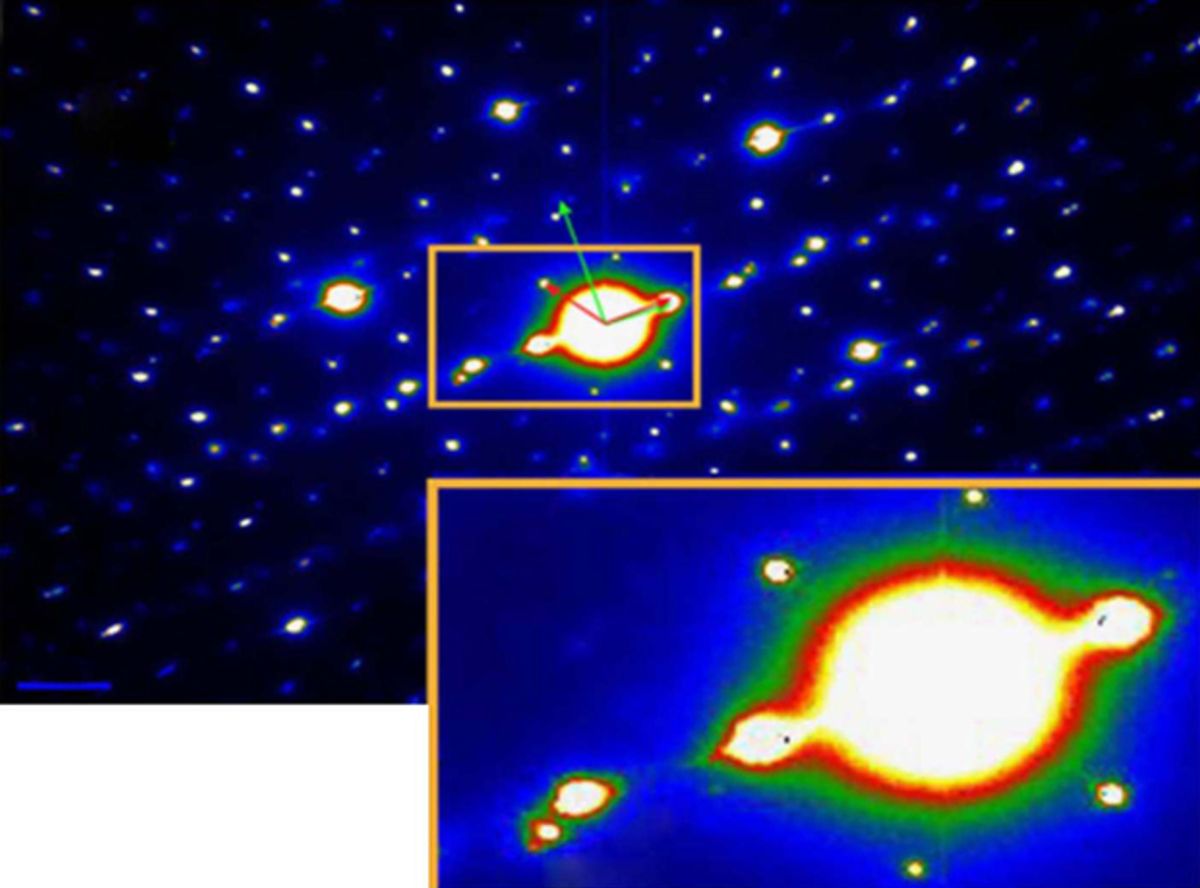Earlier this year, “borophene” elbowed its way into the increasingly crowded world of two-dimensional (2-D) materials. With rough counts estimating that there are over 100 layered materials that could potentially be stripped down to a monolayer to form a 2-D material, we are likely to see more of these in the coming years.
Researchers at the U.S Department of Energy (DOE) Berkeley Lab have added a new twist to the quest for 2-D materials by creating a 3-D material that behaves like a 2-D monolayer. The material is called rhenium disulfide (ReS2) and unlike 2-D materials, such as molybdenum disulfide (MoS2), it maintains its direct bandgap even in a 3-D version. The direct bandgap means that unlike silicon it can emit and absorb light easily, making materials that have this property attractive for optoelectronic applications.
“Typically the monolayers in a semiconducting transition metal dichalcogenides, such as molybdenum disulfide, are relatively strongly coupled, but isolated monolayers show large changes in electronic structure and lattice vibration energies,” said Sefaattin Tongay, lead author of the research, in a press release. “The result is that in bulk these materials are indirect gap semiconductors and in the monolayer they are direct gap.”
In the research, which was published in the journal Nature Communications (“Monolayer behaviour in bulk ReS2 due to electronic and vibrational decoupling”), the Berkeley team discovered that rhenium disulfide contains seven valence electrons as opposed to the six valence electrons of molybdenum disulfide and other transition metal dichalcogenides. This extra electron in the valence band is the key feature that keeps layers of rhenium disulfide from forming strong interlayer coupling.
“The extra electron is eventually shared between two rhenium atoms, which causes the atoms to move closer to one another other, forming quasi-one-dimensional chains within each layer,” Tongay said in the release. These one-dimensional chains create what is called a Peierls distortion in which the atomic positions of a one-dimensional crystal oscillate so much that the order of the 1-D material is broken. Tongay adds: “Once the Peierls distortion takes place, interlayer registry is largely lost, resulting in weak interlayer coupling and monolayer behavior in the bulk.”
The researchers believe that that new material should be useful for photovoltaic applications and for replacing the use of diamonds for “valleytronics”, in which the wave quantum number of the electron in a crystalline material is used to encode information.
The applications for the new bulk 3-D material that behaves like a 2-D monolayer will likely start growing as quickly as 2-D materials have been lately. How this will impact the ever more crowded universe of 2-D materials should be interesting to watch.
Dexter Johnson is a contributing editor at IEEE Spectrum, with a focus on nanotechnology.



